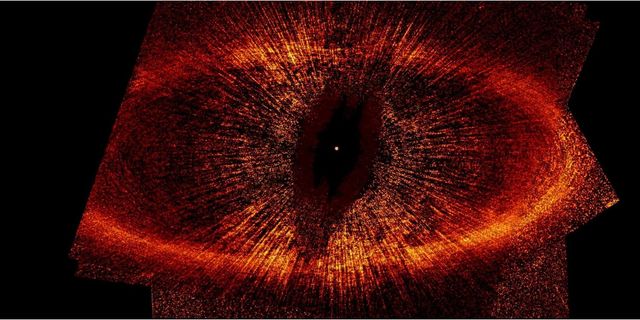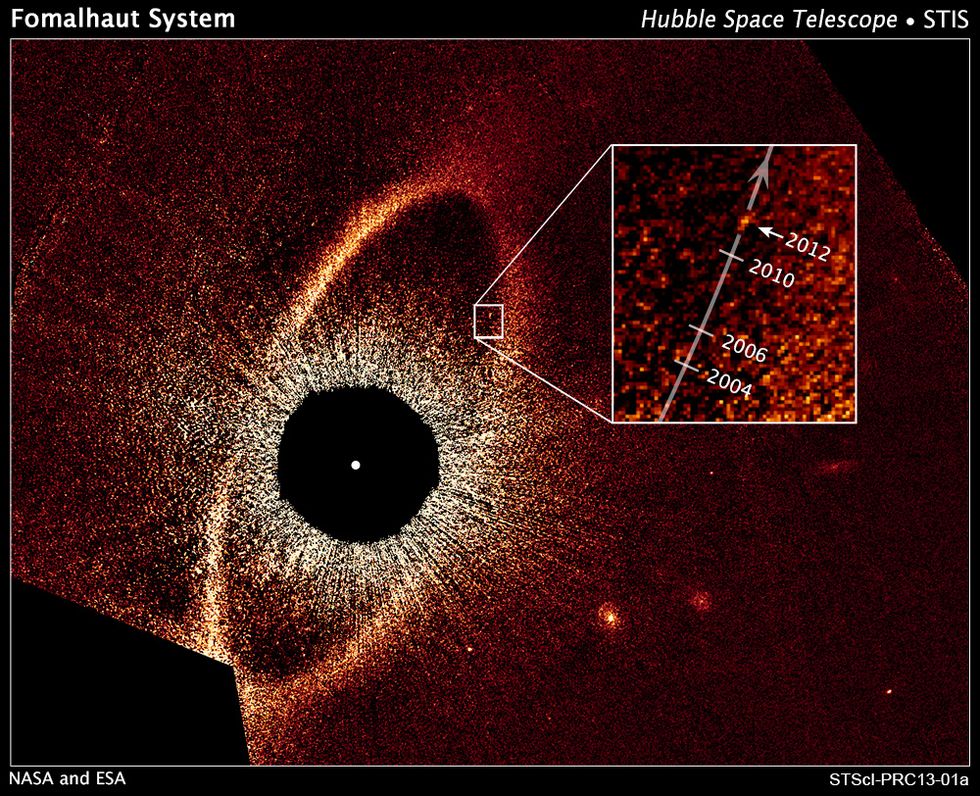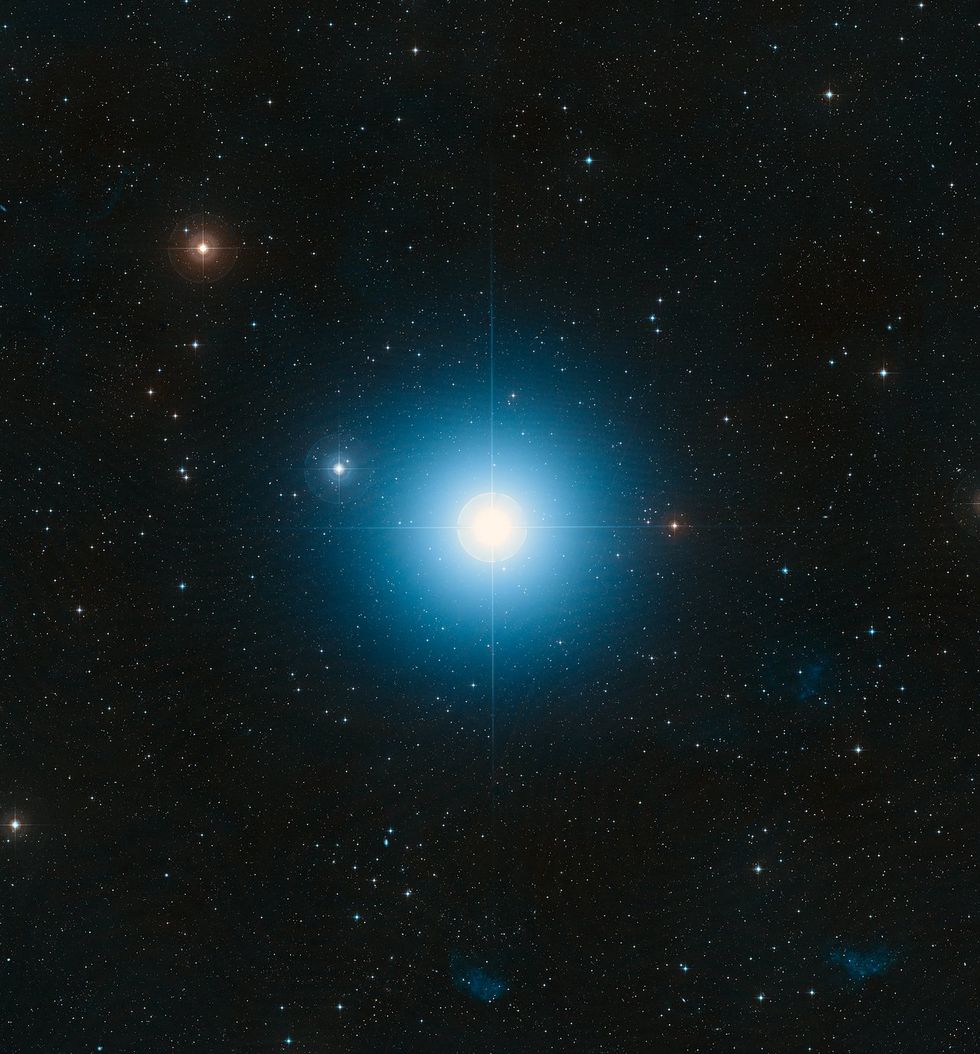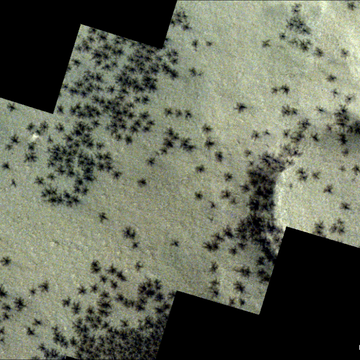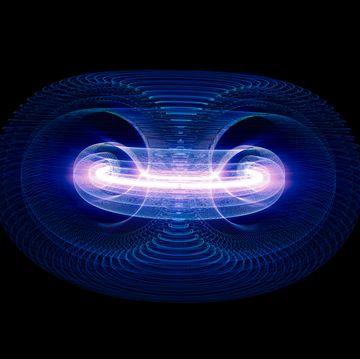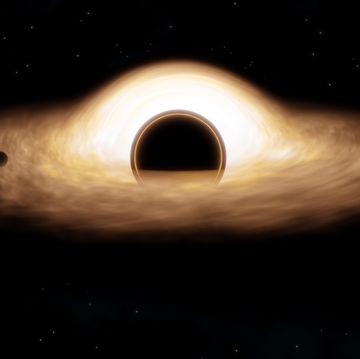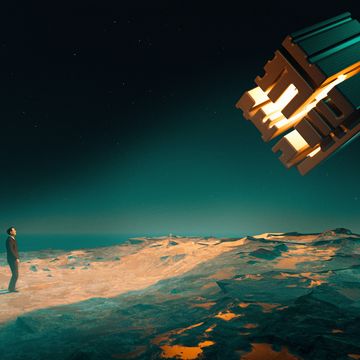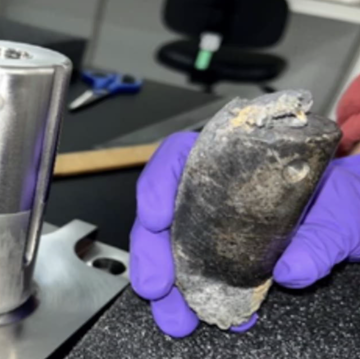Fomalhaut, the eighteenth brightest star in the night sky, is about 25 light-years from the Earth. It has twice the mass of the sun but burns much hotter and brighter. When we observe Fomalhaut in infrared (above), we see a large ring of debris where planets are likely forming. And yes, altogether it looks a lot like the Eye of Sauron.
To see the protoplanetary ring, astronomers use a tool called a coronagraph to block the light of the star. The slits in the "pupil" are shadows cast by the coronagraph. Scientists believe that stellar winds from the sun blew away the leftover debris in our own solar system about 10 million years after the sun formed, leaving only the planets and other large objects that already formed. But Fomalhaut still has a significant amount of this debris in its protoplanetary disk even though it is 440 million years old.
As a new episode of PBS's Space Time reveals, Fomalhaut is a fascinating realm for a number of reasons—not least of which is its hypothesized planet, Dagon.
[youtube ]https://www.youtube.com/watch?v=TQZyaMRp7_0&t=131s[/youtube]
It may be that Dagon, originally Fomalhaut b, acts like the small moons of Saturn and pushes the material of the protoplanetary disk into a ring with sharp edges. As Dagon orbits within the ring, it carves out that inner side, and another unseen so-called "shepherd planet" could orbit around the outer edge of the great ring.
Dagon was named for the ancient Philistine fish-god of fertility, and perhaps even more so for Lovecraft's deity of the Deep Ones, amphibious humanoid creatures in the sea, as the name was voted on by the public. Dagon is bright enough in infrared to be more than twice Jupiter's mass, but it is hidden in ultraviolet, leading most to believe that it is closer to Jupiter's size and surrounded by debris. Another possibility is that it is a smaller planet with an enormous ring system, many times larger than Saturn's, that reflects light. Dagon and Sauron have a ring, it seems.
We can learn a lot about our own solar system from watching Fomalhaut. For example, Dagon orbits Fomalhaut about once every 1,700 years at a distance farther than Neptune is from the sun. It's not likely that there was enough debris out there for a planet the size of Dagon to form, so astronomers believe it formed closer to the star and then was flung out by another large planet. Many astronomers believe that's exactly what happened in our little neighborhood of the galaxy, and that Jupiter, Saturn, Uranus and Neptune all formed close to the sun and close to each other until they were launched into their current positions by a close encounter of the massive planets.
Check out the Space Time video to learn more about Fomalhaut and Dagon. And remember, the Lord of Mordor sees all.

Jay Bennett is the associate editor of PopularMechanics.com. He has also written for Smithsonian, Popular Science and Outside Magazine.
